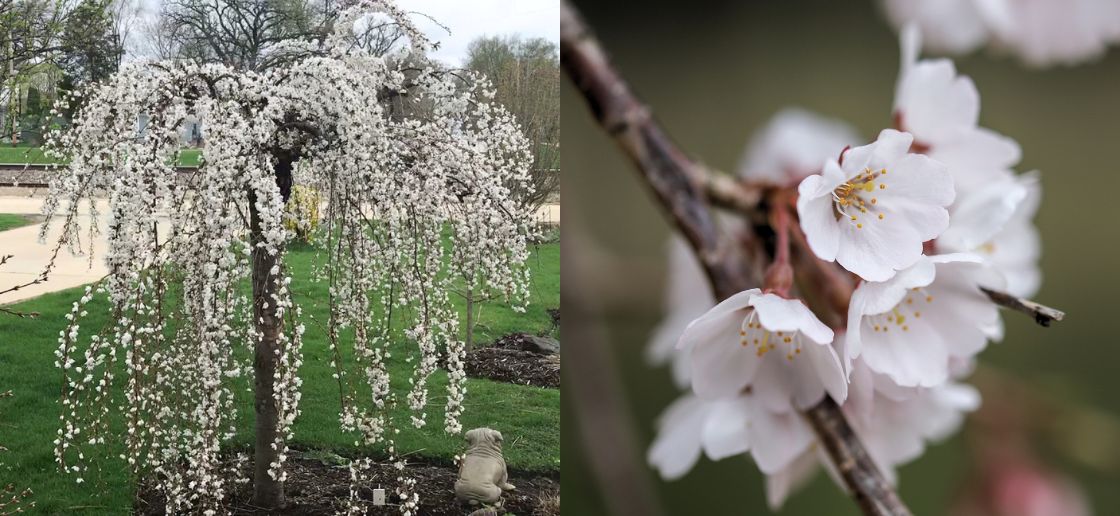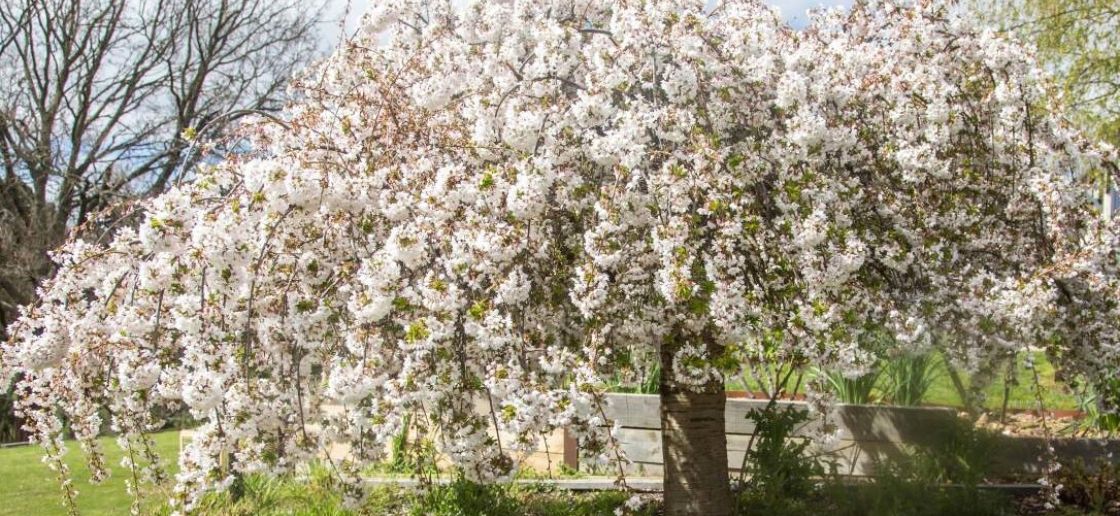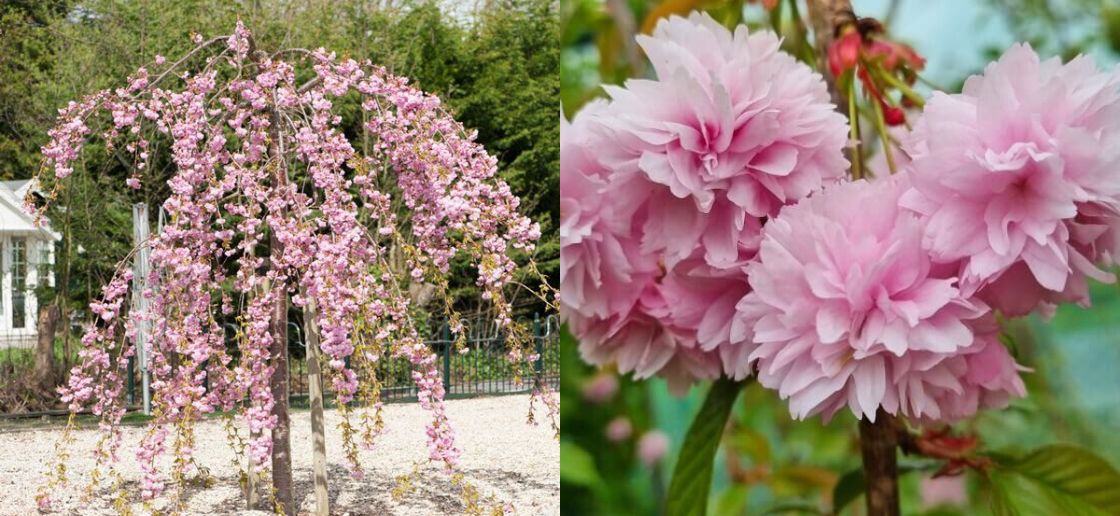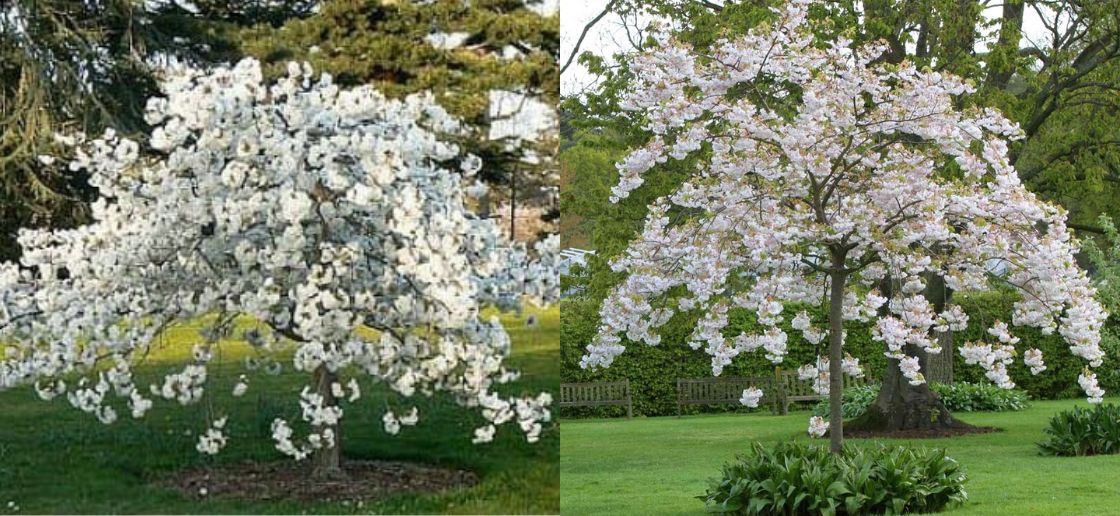5 Best Weeping Cherry Trees
Falling Snow Weeping Cherry
The most popular weeping cherry is definitely the Falling Snow. It has a neat symmetrical shape that cascades almost straight down. Its head is not overly large and it has a beautiful dense white blossom that blooms quite early in spring for a spectacular display. It’s often the first of the weeping cherry varieties to blossom.
Falling Snow is a popular courtyard tree. Many people choose to grow them in pots with a shorter stem because if they are too tall then the blossoms are too high and you can’t enjoy them as much. Growing them so they bloom at eye level is more popular. Low grafted Falling Snow can look gorgeous in pots.
The next most popular Weeping Cherry is probably the Subhirtella alba, or as most nurserymen call it – the Sub Alba for short. Its blooms are not as brilliantly white as the Falling Snow – they actually have a bit of soft pink in them. But their flowers are much bigger than Falling Snow. It can take a couple of years for them to really grow a big strong head, but when they do the amount of flowers they produce is overwhelming.
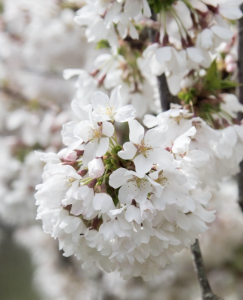 They do tend to grow out a bit more than Falling Snow so they can get wider, but you can prune them back. The foliage lasts really well and they don’t tend to get diseases or bugs so the leaves will last through to autumn and give you really lovely colour then.
They do tend to grow out a bit more than Falling Snow so they can get wider, but you can prune them back. The foliage lasts really well and they don’t tend to get diseases or bugs so the leaves will last through to autumn and give you really lovely colour then.
The Sub Alba is our favourite weeping cherry because it grows very strong, is very hardy to wind and heat and is not prone to many bugs or disease. It will grow strong for long and when it is old and covered in big bunches of blossoms it is quite spectacular.
Subhirtella rosea Weeping Cherry
The Subhirtella rosea is another weeping cherry that nursery people like to shorten the name of to just Sub rosea. It’s a big tree with beautiful, soft pink blossoms. The head of a Sub rosea can grow really quite large, up to 3 or even 3.5 metres wide, but can be controlled by pruning. When they bloom you get this big, full head of flowers that looks like an amazing giant cloud of soft pink. Really, really spectacular. It can grow so large you can end up with a gorgeous canopy of flowers that is delightful to sit under in spring.
The Sub rosea is very adaptable to a wide range of growing conditions including heat and moderate drought, but it’s best kept out of the wind to help it retain its blossoms and autumn leaves for longer. The trunk of the Sub rose will only grow as tall as its graft height so this gives you prediction on how tall it will be.
The weeping cherry is one of the last to blossom in spring. It has quite beautiful, double-petal, pink blossoms which tend to completely cover its bare, loosely handing branches.
The most unique feature of a Cheals weeping cherry is that it unlike other varieties which tend to grow in a definite way, either all the branches cascading down or all the branches growing outward, a Cheals can grow in a very irregular way. Some of the branches may cascade down, while others might tend to grow outwards or even upwards. So it can grow with an asymmetrical look in striking contrast to other varieties or it may grow with some of its branches in one direction giving it some extra character!
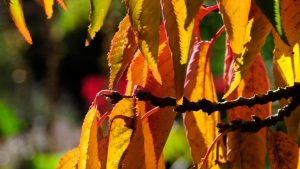 In autumn, the Cheals will be awash with colours including beautiful bronzes. It is a lovely feature tree in a large pot or in the garden, but like all weeping cherries, best to plant it in a spot that is not too exposed to the wind.
In autumn, the Cheals will be awash with colours including beautiful bronzes. It is a lovely feature tree in a large pot or in the garden, but like all weeping cherries, best to plant it in a spot that is not too exposed to the wind.
Mount Fuji/Shimidsu Sakura Grafted Upright Cherry
Strictly speaking the Mount Fuji is not actually a “weeping cherry” at all. It is very similar to a Shimidsu Sakura and both share the same characteristic of growing in a very horizontal manner with their branches reaching out rather than cascading down in a “weeping” fashion.
Where they differ is that the Mount Fuji has a white double flower that grows in hanging bunches of fives or sevens. The Shimidsu Sakura however has flowers that start off kind of a light pink and fade to white. So you get lovely dark pink buds and light pink flowers and white flowers all mixed together.
The Mount Fuji will tend to grow much wider with longer branches, sometimes up to 3 or 4 metres whereas the Shimidsu will grow in a more compact fashion, but you can of course prune any variety to keep them smaller if you have limited space. With large hanging clusters of three, five or even seven beautiful white blossoms it is no surprise that Mount Fuji is one of the stars of the Annual Japanese Blossom Festival.
As both of these varieties grow in a more horizontal fashion, they are better suited than other weeping cherries to growing in a cottage garden, where you can plant a whole range of low flowering plants under and around them or even a flowering ground cover like a White Bacopa or a White Arenaria which will give you a lovely effect of matching white flowers below.



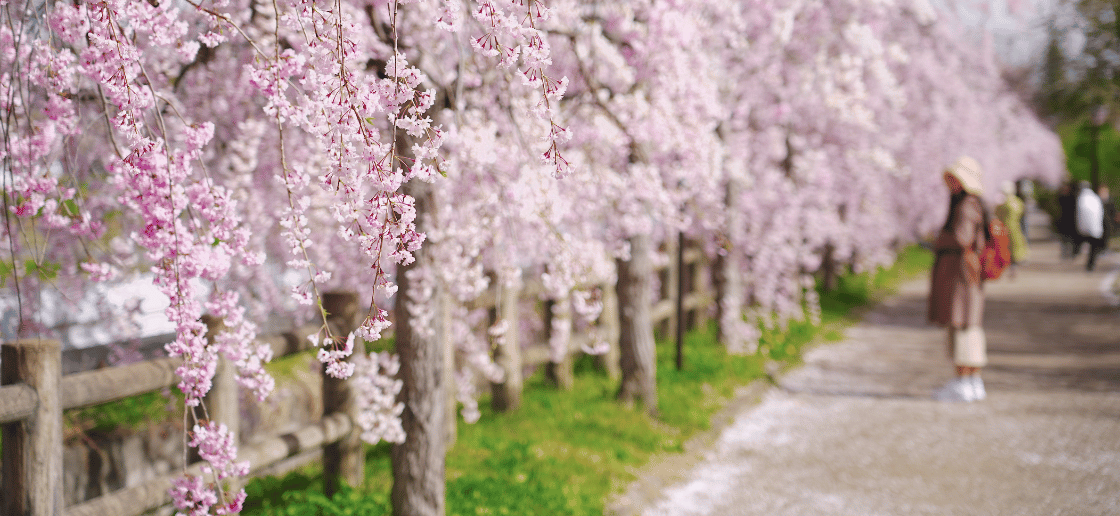
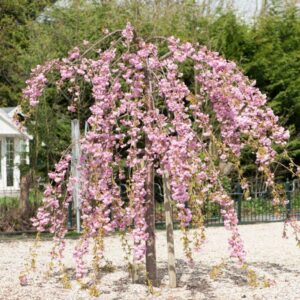
 Each weeping cherry will bloom at different times in spring, with the
Each weeping cherry will bloom at different times in spring, with the 